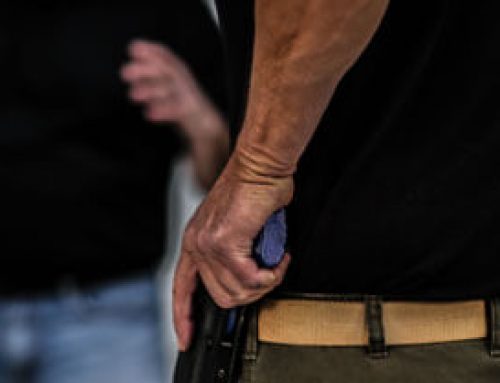Your most powerful weapon is your mind. It doesn’t need batteries and never runs out of bullets. We all know what mental focus is, but how is it employed in a fight for your life? There are the four critical elements of staying mentally focused under extreme duress: perception, awareness, decision, and commitment.
Perception
We are each born with survival instincts to rapidly detect and assess an emerging physical threat. At the very onset of a scenario that raises the hair on the back of your neck, we get a feeling or a hunch. Some say it is perception. Whatever you want to call it, when you get a blip on the radar no matter how it gets there, it’s something that warrants your attention.
Activated subconsciously, perception is the earliest warning system we humans have on board. It is said that females tend to be more fine-tuned in their perception than males. Regardless, those who picked up something on their radar and chose to ignore it. later regretted that decision.
Using perception affords you the maximum amount of time to respond should there be an actionable item. The earlier you perceive that threat, the more time you have available to solve the tactical problem.
Awareness
Next level down from perception is situational awareness. Most people think just looking at something with your eyeballs is enough to process information from your immediate environment. This is not the case. It was Henry David Thoreau who is credited with saying “It’s not what you look at that matters, but what you see.” To truly recognize telltale signs of a potential threat you must be mentally engaged with your environment.
Although not as early a warning system as perception, situational awareness is the currency that buys you time and affords you greater opportunity to solve the problem.
Both perception and situational awareness can be used as threat deterrents. If the bad guy(s) know you’re on to them, then they have lost the element of surprise and recognize that you’re not some unaware soft target. They know from experience that if you picked them up that early on the timeline, then you’re probably a hard target and it causes them to ask the question “Are there softer targets?” and provides the answer; “Yes.”
Decision
Moving further along the mental focus scale, next are your decision-making skills. Your perception and situational awareness may buy you the time to decide, but a decision must be made to formulate a viable plan.
Is this an actual threat? Can it hurt me and/ or those with me? What are my options? Is it best to take flight or fight? Where is my nearest cover or concealment? Should I go to guns? Blend in with a crowd of people? Duck into a store? Perhaps the best response may be to raise your hand, look him in the eye and say in a loud commanding voice “Stop!” “Stay Back!”
Regardless of your available options, the decision-making process requires mental acuity and takes time. In response to an active threat, you are not ahead of the action-reaction power curve but behind it – a place where time is not your friend. The greater your mental focus, the quicker your decision can be made to take control of the fight.
Use your wits and your valuable time wisely in deciding what to do next because once you’ve made your decision you cannot unmake it. The old saying “We are all free to decide, but we are not free from the consequence of that decision” applies.
Commitment
Don’t put one foot in two separate canoes mentally. When you’re doing one task do it well, then go on to the next. Process one task at a time.
Much like shooting well. You want to shoot one shot at a time. Follow the shooting process from start to finish. Stay on that one shot and only when you are finished with that shot do you move on to the next shot. Your best shot at success in a violent physical altercation is the same one-for-one commitment.
Mental focus is a commitment. Stay mentally focused on the one task. Do it well. Upon completion, leave it mentally. Once you’re done with it, then move on to the next one. Don’t get sucked into the tendency of trying to do two things at once.
You’re not permitted the luxury of cutting corners when it comes to fighting for your life. Apply 100% mental focus on the task at hand until it is completed.
If it Looks Like a Duck
If you perceive something isn’t right don’t ignore it. If it doesn’t look right, feel right or smell right, then it’s probably not right. Don’t second guess your perception. Let it process internally and then be willing to do something about it. Focus sharply on what your perception is telling you.
Applying your situational awareness requires mental attachment to your immediate environment. You must engage your mind for it to be effective.
Your decision-making process must be expedited to assess a dynamic situation in a timely manner. It takes mental focus to arrive at an appropriate decision. The greater your mental focus the greater your absorption of environmental information which allows you to make more informed decisions.
Lastly, but certainly not least, is your commitment to follow through on your decision without hesitation. You do not have time to second guess. One hundred percent commitment one task at a time, makes you mentally sharper than your opponent(s).
Hundredths of a second matter in a fight for your life and staying mentally focused affords you the opportunity to use them wisely. Applying a sharp mind in a fight makes you a harder target.






